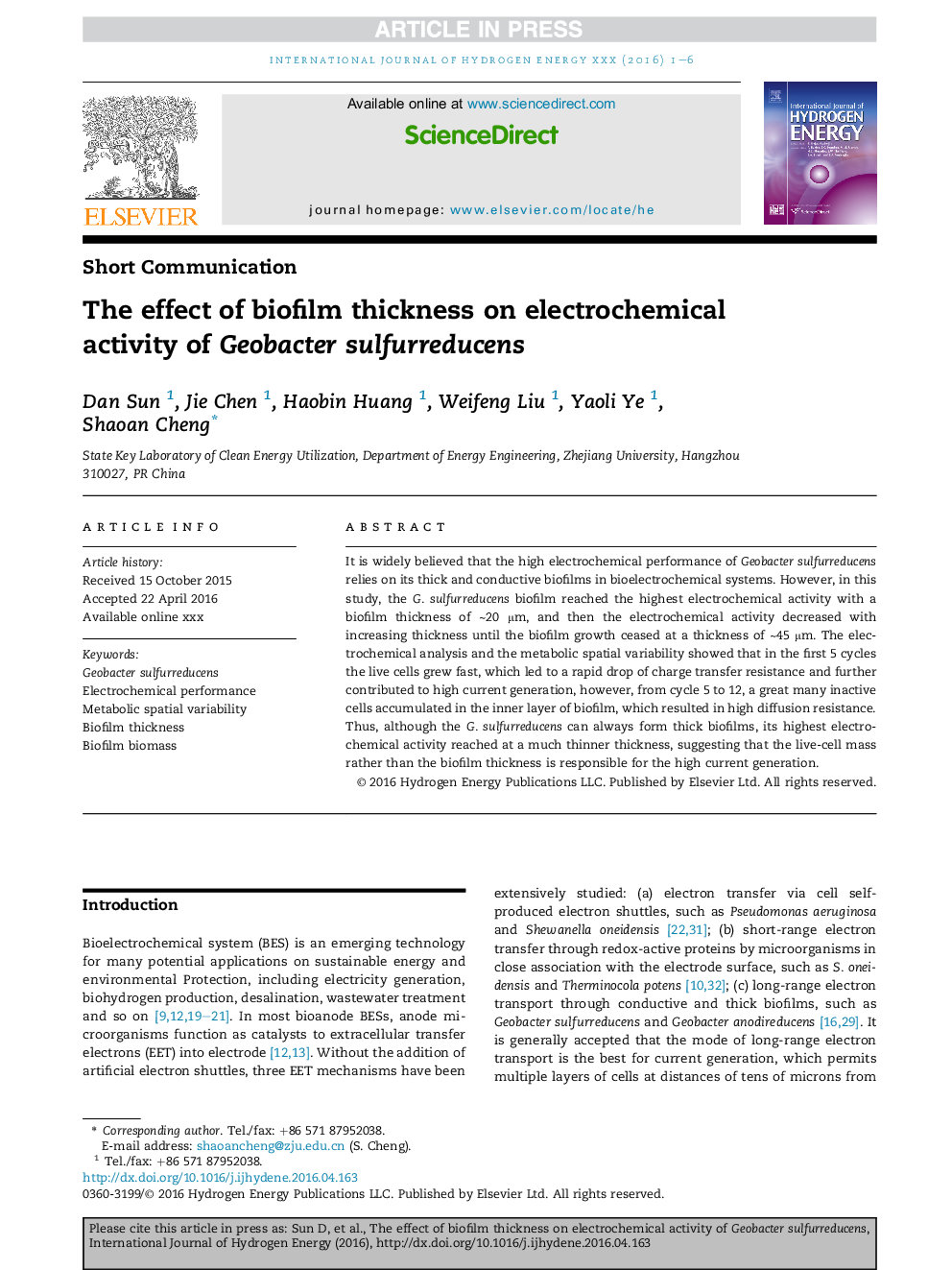| Article ID | Journal | Published Year | Pages | File Type |
|---|---|---|---|---|
| 5147659 | International Journal of Hydrogen Energy | 2016 | 6 Pages |
Abstract
It is widely believed that the high electrochemical performance of Geobacter sulfurreducens relies on its thick and conductive biofilms in bioelectrochemical systems. However, in this study, the G. sulfurreducens biofilm reached the highest electrochemical activity with a biofilm thickness of â¼20 μm, and then the electrochemical activity decreased with increasing thickness until the biofilm growth ceased at a thickness of â¼45 μm. The electrochemical analysis and the metabolic spatial variability showed that in the first 5 cycles the live cells grew fast, which led to a rapid drop of charge transfer resistance and further contributed to high current generation, however, from cycle 5 to 12, a great many inactive cells accumulated in the inner layer of biofilm, which resulted in high diffusion resistance. Thus, although the G. sulfurreducens can always form thick biofilms, its highest electrochemical activity reached at a much thinner thickness, suggesting that the live-cell mass rather than the biofilm thickness is responsible for the high current generation.
Related Topics
Physical Sciences and Engineering
Chemistry
Electrochemistry
Authors
Dan Sun, Jie Chen, Haobin Huang, Weifeng Liu, Yaoli Ye, Shaoan Cheng,
